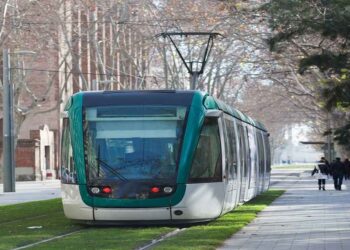Autonomous vehicles or driverless vehicles have started to gain a lot of popularity today. And we are not talking of only the millennials who have an affinity towards it but also people across all the age groups. The effortlessness that this technology offers has come a long way but it is well to be noted that there’s a lot that goes behind the scenes in building this technology and the infrastructure that supports it.
The role of infrastructure in Autonomous Vehicles- AV’s
AV’s involve enhanced manufacturing process, a new kind of supply chain and a very exclusive infrastructure. The readiness of the infrastructure for autonomous cars forms one of the key criteria’s that would suggest if the country is AV driven or not. AV driven road infra is one of the most critical elements that must be looked into. These vehicles require excellent roads, harmonized regulations and continuous monitoring, both done manually and system operated.
The erstwhile on-road telematics, lanes, signage, crash-barriers need to become smarter and as a matter of fact, their optics need to undergo a dramatic change. Though expensive, the infrastructure would require changes that suit the capabilities and capacities of high-tech driven autonomous vehicles.
Roadside sensors – They have a major role to play in this landscape. These sensors have to be ideally placed alongside lanes, curves as well as sidewalks to foresee any oncoming traffic or object.
Machine-readable signs – Driverless vehicles mostly use image recognition when reading road signs. Machine-readable codes ought to be embedded within the signs to ensure that it becomes easier to broadcast signals to these vehicles.
Lane Markings – Self-driving cars require machine-readable and radar effective road markings. They don’t have to look good or great but their utilization needs to be perfect and companies involved in their manufacturing should focus more on that.
V2V & V2I – The role of vehicle to vehicle (V2V) and vehicle to infrastructure (V2I) has become extremely sensitive in the case of autonomous vehicles. The development of this landscape requires the use of technology of the highest order and a lot of investment needs to be done in this regard. In places where AV’s have started to show their prowess, this infrastructure has proven to be the key to their success.
It is well to be noted that countries where the traditional vehicles have taken a long time to find their ground and where the process is still on, they can leapfrog to the autonomous vehicle technology with ease as they will not have to revamp the entire infrastructure.
Technologies used in self-driving cars
For those who suggest that GPS is one of the most critical technologies used in the functioning of these AV’s, they should think again. There are certainly other important elements, at times more significant than a GPS which make the autonomous cars viable.
Sensors, Connectivity and Software Controlled Algorithms are the most important attributes which make these vehicles perform with ease. Features such as blind-spot monitoring, lane-keep assistance as well as forward-collision warnings are well imbibed in sensors making their presence extraordinarily important and imperative. The sensors in self-driving cars are always observing and can scan multiple directions simultaneously. Radars & Cameras are also a part of sensor technology that provides necessary inputs to navigate the car safely. When it comes to connectivity, it makes sure that the cars have access to the latest traffic & weather conditions, infrastructure developments taking place, maps and adjacent cars. The data offered through the connectivity module monitors cars surrounding environment and anticipates braking if required. And then the software-controlled algorithms are all about capturing the data from the sensors and connectivity and make decisions about steering, speed, applying brakes, etc. Perhaps, these algorithms are the most complex of all the technologies that are found in AV’s. The decision making of these algorithms reflects on the ultimate performance of these vehicles. Needless to say, the software must be robust and fault-tolerant.
As on date two of the most talked-about advancements in driverless technologies come from Google and Tesla. Google practices the LiDAR- A radar-like technology which uses light in place of radio waves and Tesla depends on a software system called the Autopilot which works on high-tech camera sensors.


































